École James Nisbet Community School
Aboriginal Education October 2016 octobre
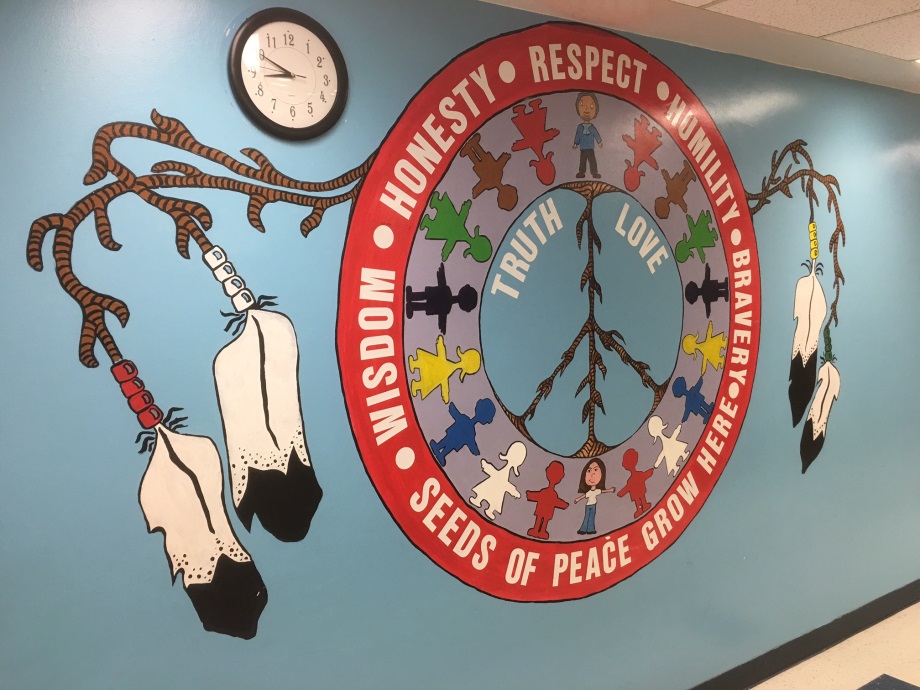 We have many celebrations from the 2015-2016 school year. Nous avons plusieurs célébrations à partager de l’année dernière. Teachers worked to integrate Indigenous perspectives in their classrooms in a variety of ways. Some of these include: field trips to the Indigenous Cultural Centre, guest Elders, books, art projects, sharing circles, grandfather rocks, exploring the medicine wheel, and expanding classroom literature.
We have many celebrations from the 2015-2016 school year. Nous avons plusieurs célébrations à partager de l’année dernière. Teachers worked to integrate Indigenous perspectives in their classrooms in a variety of ways. Some of these include: field trips to the Indigenous Cultural Centre, guest Elders, books, art projects, sharing circles, grandfather rocks, exploring the medicine wheel, and expanding classroom literature.
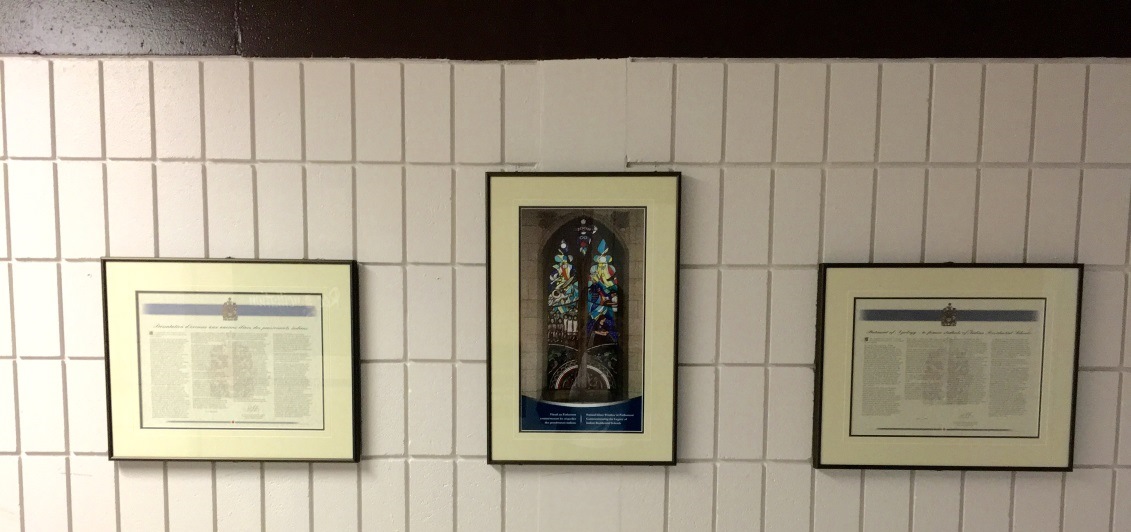 Comme un personnel, nous avons discuté notre foyer comme centre d’accueil. As a staff we reimagined our front foyer to include the Seven Teachings, which we explored as a school over a period of seven weeks after participating in a professional development day at the Canadian Museum for Human Rights. We researched our school namesake to see what, if any, his ties to residential schools were. We were happy to learn that he was a proponent to Indigenous children learning their languages and culture in school in the 1800s. We also hung the Statement of apology to former students of Indian Residential Schools outside of the office as a reminder of our responsibility as a school. Nous avons aussi affiché la Présentation d'excuses aux anciens élèves des pensionnats indiens hors de notre bureau comme un rappel de notre responsabilité comme école.
Comme un personnel, nous avons discuté notre foyer comme centre d’accueil. As a staff we reimagined our front foyer to include the Seven Teachings, which we explored as a school over a period of seven weeks after participating in a professional development day at the Canadian Museum for Human Rights. We researched our school namesake to see what, if any, his ties to residential schools were. We were happy to learn that he was a proponent to Indigenous children learning their languages and culture in school in the 1800s. We also hung the Statement of apology to former students of Indian Residential Schools outside of the office as a reminder of our responsibility as a school. Nous avons aussi affiché la Présentation d'excuses aux anciens élèves des pensionnats indiens hors de notre bureau comme un rappel de notre responsabilité comme école.
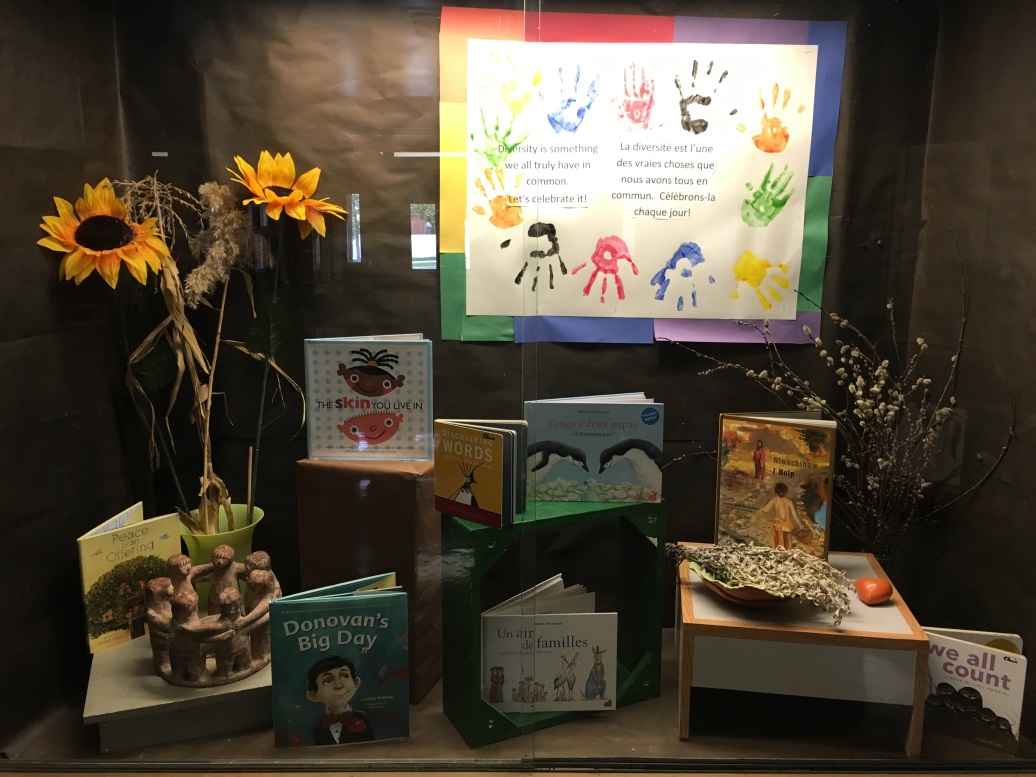
This coming year, we want to work to create connections between Indigenous perspectives, reconciliation and our school motto of P.E.A.C.E. The acronym stands for: Peace (paix), Empathy (empathie), Acts of kindness (actes de gentilesse), Cooperate (coopération), Everyone Counts (Ensemble chacun compte).
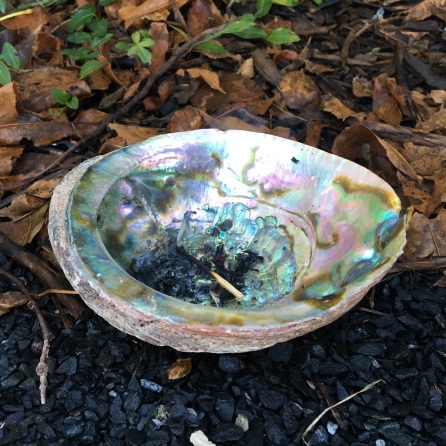 Encouraged by the example of other schools, we now acknowledge that we are on Treaty 1 territory as part of our morning announcements. This is a small way of recognizing the space we are in. We also started a Monday morning smudge circle for interested staff and families. Smudging is a tradition, common to many First Nations, which involves the burning of one or more medicines gathered from the earth. Smudging allows people to stop, slow down, become mindful and centred. Smudging also allows people to let go of something negative. What a beautiful and natural connection to practicing peace.
Encouraged by the example of other schools, we now acknowledge that we are on Treaty 1 territory as part of our morning announcements. This is a small way of recognizing the space we are in. We also started a Monday morning smudge circle for interested staff and families. Smudging is a tradition, common to many First Nations, which involves the burning of one or more medicines gathered from the earth. Smudging allows people to stop, slow down, become mindful and centred. Smudging also allows people to let go of something negative. What a beautiful and natural connection to practicing peace.
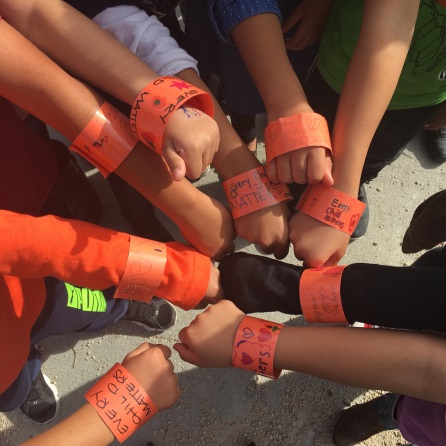 We continue to explore ways to consider the idea of peace building as it connects to the TRC (Truth and Reconciliation Commission). Un des appels à l’action de la Commission de vérité et réconciliation parle de “le renforcement de la compréhension interculturelle, de l’empathie et du respect mutuel”. One of the calls to action speaks specifically to “Building student capacity for intercultural understanding, empathy, and mutual respect”. Sounds a lot like P.E.A.C.E. to us!
We continue to explore ways to consider the idea of peace building as it connects to the TRC (Truth and Reconciliation Commission). Un des appels à l’action de la Commission de vérité et réconciliation parle de “le renforcement de la compréhension interculturelle, de l’empathie et du respect mutuel”. One of the calls to action speaks specifically to “Building student capacity for intercultural understanding, empathy, and mutual respect”. Sounds a lot like P.E.A.C.E. to us!
Le 30 septembre est reconnu comme jour pour de reconnaissance pour ceux et celles qui ont survécu les pensionnats. In recognition of September 30th, many of our classes read stories and had discussions about the residential school systems. We’ve expanded our PowWow Club this year to allow more students to participate. We are working diligently to increase the number of books representing Indigenous culture and people in our school library, our Freebrary, and as our monthly Peace Picks which are distributed to all of the classrooms.
Through invited guests, books, field trips, professional development, and community involvement, we look forward to deepening our learning in the area of Aboriginal Education as a school and will continue to look for ways to authentically integrate Indigenous perspectives into the work that we do. After all, we are all treaty people. Nous sommes tous visés par les traités.
